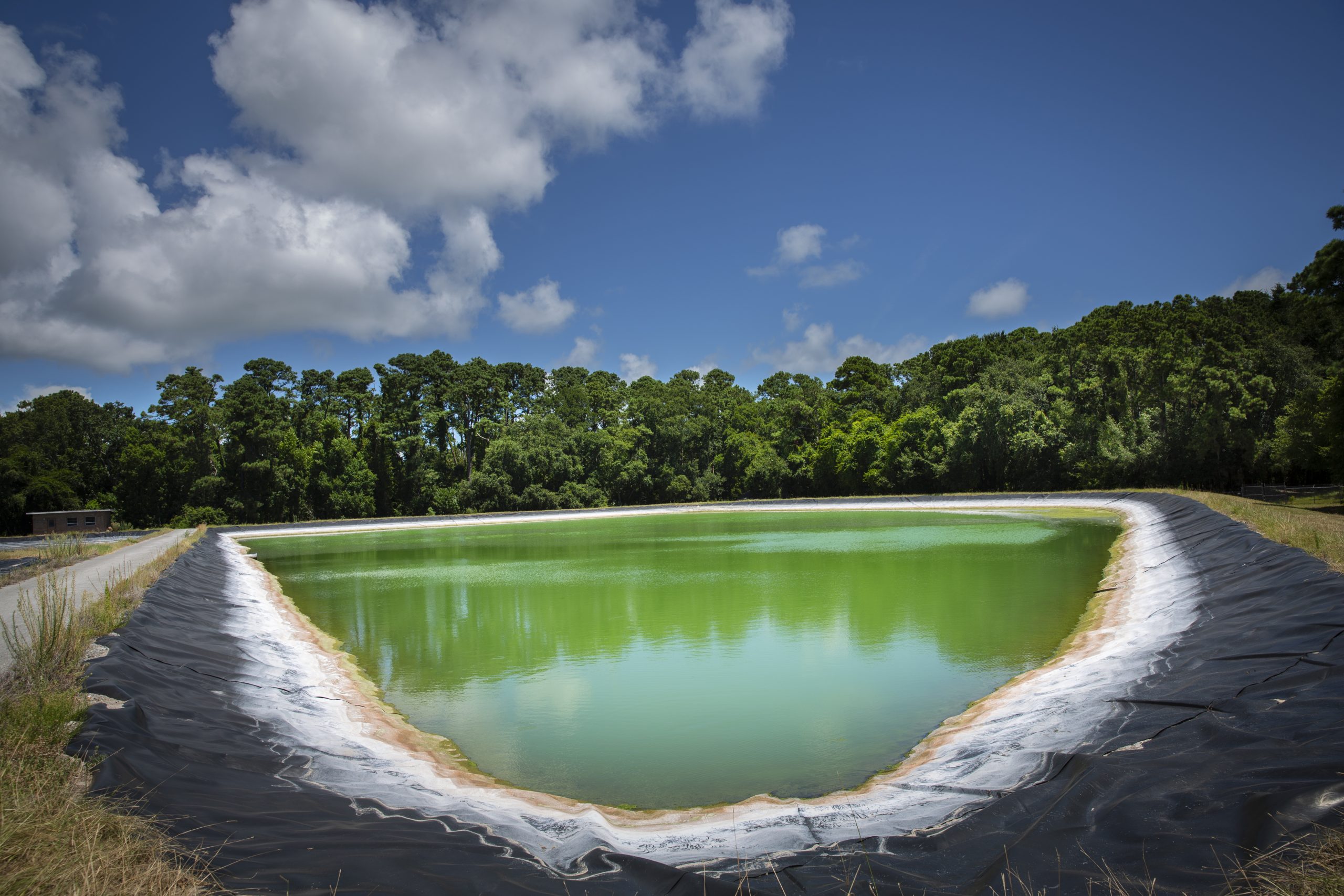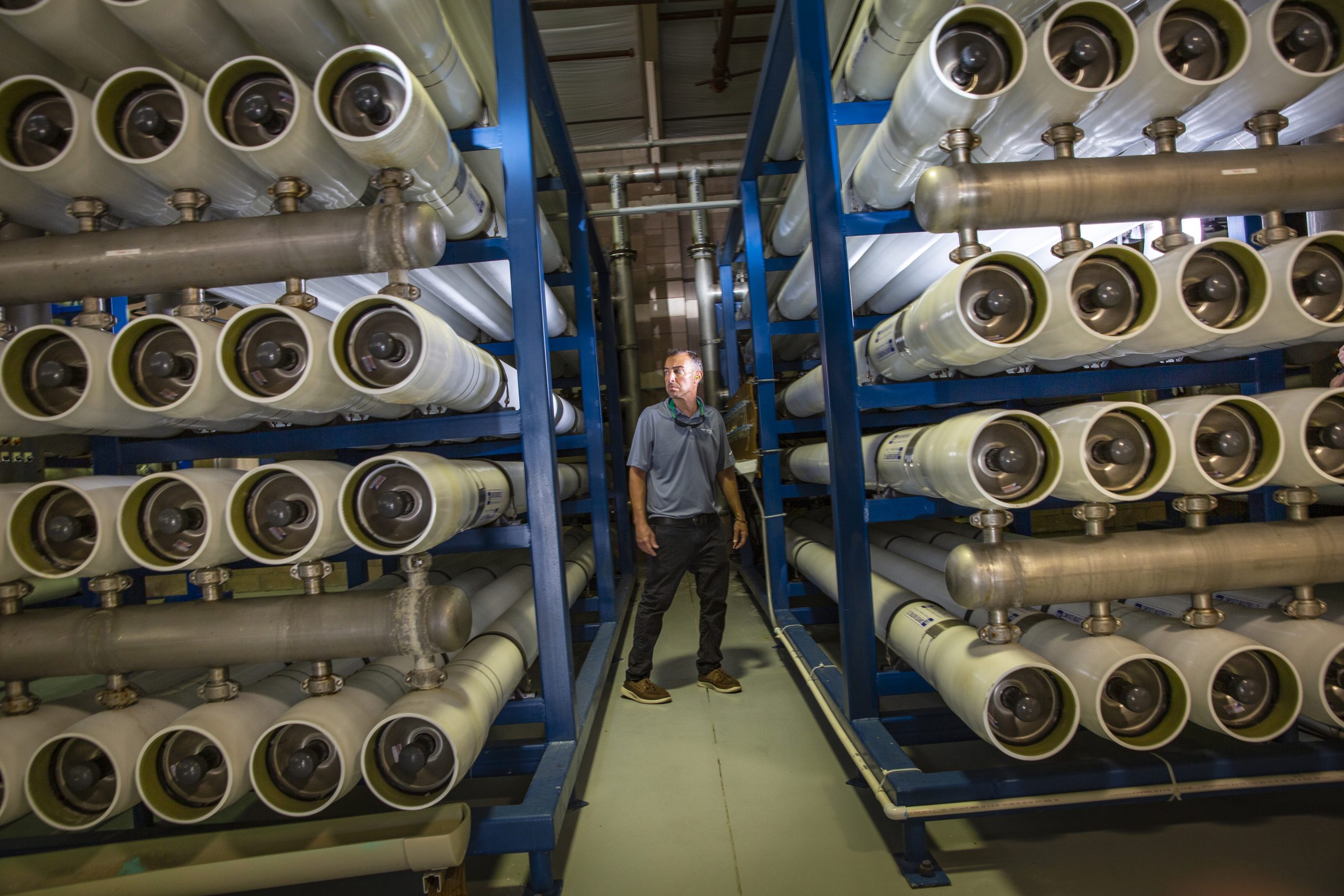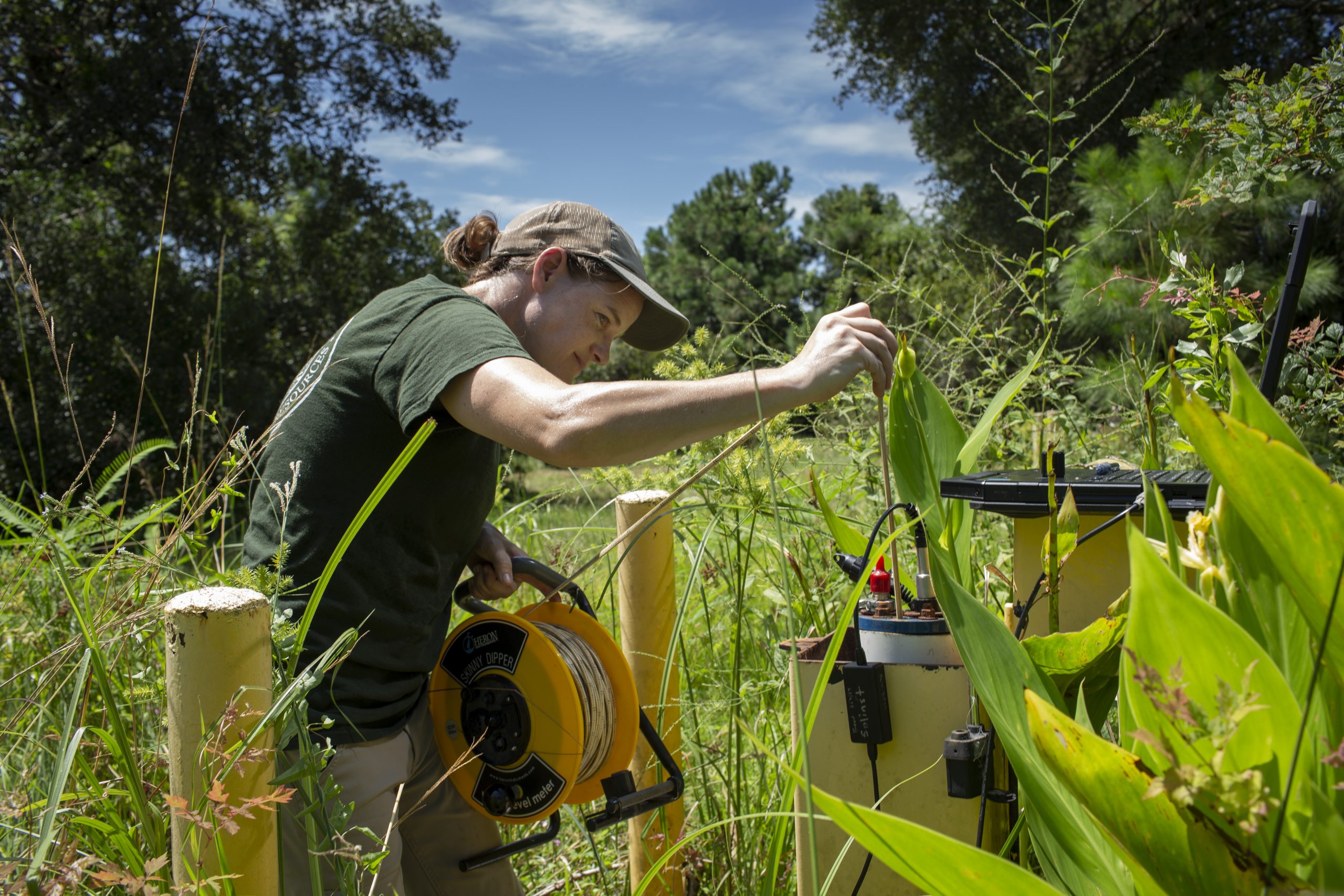On Long Island in New York, testing for the first time shows saltwater reaching deeply into a drinking-water aquifer on the southern shore, evidence of trouble coming from an invisible flood of salt driven by climate change.
The U.S. Geological Survey reported in September that Long Island groundwater, which 3 million people rely on, is much more contaminated by saltwater than it previously theorized. One test near Jamaica Bay in Long Island’s Nassau County showed water nearly as salty as the ocean.
Ongoing overpumping of groundwater for irrigation, drinking water and other urban uses makes it worse, the study warned, by creating vacuums for seawater to fill.
Frederick Stumm, the government hydrologist who led the research, lamented New Yorkers’ “false sense of security” about the saltwater intrusion caused by overpumping compounded by higher seas and more storms.
“We’re not in as great of shape as we thought we were,” he told the Howard Center for Investigative Journalism at the University of Maryland.
Around the country, scientists are sounding the alarm about saltwater intrusion. But the responses on the ground are sometimes inadequate and may not be sustainable because they run up against economic pressures from development, farming or tourism.
This summer, New Jersey issued an alarming report that sea levels near Atlantic City are rising at twice the global average.
In Cape May County at the state’s southern tip, hundreds of salt-damaged wells have been shut down over decades.
The city of Cape May is pressing to increase the capacity of its desalination plant by half, triggering worry about cost and environmental harm, the Cape May County Herald reported. Though desalination secures safe drinking water for the city of Cape May, the plant pumps from the groundwater system relied on by others in the region, according to the Herald.
Jeff Tittel, director of the New Jersey Sierra Club, calls the Cape May plant a symbol of “the hubris of man thinking we can always overcome any natural resource or any changes in the environment.”
Instead, Tittel said, “you’re really changing the whole ecology of the region.”

In California, state hydrologists are investing $12 million into statewide surveying of groundwater systems, deploying a technology that sends electronic waves beneath the Earth’s surface from helicopters.
This will give the state — in which water wars have dried lakes, inspired an Oscar-winning film noir and changed ecosystems forever — an understanding they’ve never had.
“You’re getting the kind of imaging that doctors depend on for medical imaging,” said Rosemary Knight, a Stanford University professor who has been involved in pilot studies on airborne electromagnetic methods.
Yet overpumping in California and other states persists in many vulnerable areas.
Doug O’Malley, director of Environment New Jersey, said constant development cannot be sustained. “You’re going to need to say no to new development permits,” he said. “Coastal communities are the mother’s milk for adult developers, and we’re loving the shore to death.”
Delaware River
The Delaware River Basin provides drinking water for 15 million people in Delaware, Pennsylvania, New Jersey and New York.
Those in Philadelphia and across the river in New Jersey would be among the first to feel severe impacts as the river grows saltier. An intake that provides over half of Philadelphia’s water, as well as an intake for one in three New Jerseyans, are both 110 miles upstream from where the Delaware River flows into the ocean.
Neither drinking water intake is equipped to remove salt from water.
To stave off trouble, the Delaware River Basin Commission manages the river. It tracks where the chloride concentration is rising beyond 250 milligrams per liter — 12 times higher than the EPA recommendation for those on very low sodium diets. The commission aims to keep this “salt line’’ below River Mile 98, a position chosen as a buffer from the water intakes.
“Whether it will reach the drinking water intakes in the near future, in the next five or 10 years – probably not in the absence of a severe drought,” said Kristen Bowman Kavanagh, the commission’s deputy executive director.
But Matt Csik, director of water quality and environmental compliance at New Jersey American Water, which operates one of the two intakes threatened by the Delaware River’s salt line, said “hope is not a good strategy.”
“You take action now,” Csik said.
Environmentalists fought against a project to deepen the river for decades, in part because it would make it easier for saltwater to make its way upstream. They lost. Last year, the U.S. Army Corps of Engineers completed the work to make the transport of goods more efficient.
So far, river managers have held the salt line stable around River Mile 70.
But areas of the river downstream are still getting saltier, endangering the Delaware River’s Atlantic sturgeon, which are prehistoric and unlike any other sturgeon in the world. The freshwater these fish need to reproduce is increasingly turning to saltwater. Scientists estimate that fewer than 300 of these genetically distinct fish remain.
“These sturgeon can’t take many hits, and they already get a lot of hits,” said Delaware Riverkeeper Maya van Rossum, referring to years of water pollution, river manipulation, overfishing — and saltwater intrusion.
Coming ‘from all angles’
In Hilton Head, South Carolina, girding against saltwater is relentless. Plumes of saltwater advance inland at a rate of 400 feet a year, according to tracking by the U.S. Geological Survey and a water utility.
“There’s upward migration and lateral migration. Here on the island, we’ve had it coming at us from all angles,” said Pete Nardi, general manager of Hilton Head Public Service District.
Saltwater intrusion was identified as a problem as long ago as the 1930s in Hilton Head, a barrier island and heavily developed resort town that drew about 2.5 million tourists yearly before the pandemic.

Not until more than a half-century later, with wells growing too salty for use, did the state impose pumping restrictions that have stiffened since.
Even so, since 2000, Nardi’s utility has lost five of its 11 wells that reach deep into the Upper Floridan aquifer. And within four years, the utility has a plan for the potential loss of three of the five remaining wells.
Hilton Head Public Service District and two other local utilities have spent $129 million since 1998 to combat saltwater intrusion, Nardi said, and he expects more investments.
In a decade’s time, average users have seen their water bills increase 37%, according to figures supplied by the company.
Hilton Head is trying to adapt. A local ordinance allows watering only two days a week and requires a working rain sensor on irrigation equipment. Municipal wastewater is reused and sold to golf courses, which number 24 on an island that is 5 miles wide and 12 miles long. Twenty-one of the courses use recycled water, Nardi said.
Nardi sees more adaptation needed in South Carolina’s low country.
“Watering of lawns, in-ground irrigation using our potable drinking water — it doesn’t seem sustainable on a long-term basis,” he said. “We need to change our paradigm of consumption.”
That may be more easily said than done.
In June, Brooke Czwartacki, a South Carolina hydrologist, drilled a 12th test well along the state’s coast devoted to measuring saltwater intrusion in an aquifer.
Drinking water from deep underground is a pressing matter, with a pending request by Google to triple the amount drawn from another aquifer to cool equipment at its Berkeley County data center.
Since being hired by the state as a hydrologist in 2014, Czwartacki has worked to build a statewide water-monitoring program going aquifer to aquifer.
“I don’t think people understand that while we have the surface-water flood, we also have this flood of groundwater,” she said.
Of recent findings, she added: “The expanse of intrusion is starting to spread inward. But it’s a slow creep.”

In private wells, lax oversight
About 43 million people in the United States get water from unregulated systems, which means wells serving fewer than 25 people, according to U.S. Geological Survey estimates.
Yet impacts of salt on such wells and the people who drink from them get little attention because of minimal regulation and exemption from the federal Safe Drinking Water Act.
There is no enforceable standard for salinity in drinking water. Many municipalities accept chloride measured at 250 milligrams per liter, which affects taste and can also increase the risk of high blood pressure, heart disease and stroke among people already eating high-sodium diets.
While several states are moving to strengthen drinking-water standards, current hodge-podge regulations point to the need for well owners to fend for themselves.
In the East, New Jersey’s regulations are the most stringent, requiring water testing when homes with wells change hands. New York requires testing of wells serving five or more people.
In Delaware, where an estimated 182,000 people rely on private well water — or one in six families — salinity is less of an issue than other groundwater impurities from nitrates to leaking chemicals.
But salt is also showing up in wells there. A well test taken from Sussex County, viewed by the Howard Center, showed 69 milligrams per liter — three times higher than the government advice for people on low-salt diets.
In Maryland, Andrew Lazur, a University of Maryland Extension state water quality specialist, examined state U.S. Geological Survey data and found that people consuming well water on Maryland’s coastal plain get up to or greater than 15% of the daily recommended sodium intake from the water. Drinking water typically provides 1% of salt intake; the rest comes from food.
Salt in groundwater also compounds other health threats by, in effect, mobilizing harmful heavy-metal contaminants like lead from corroding pipes and other sources, Lazur said.
Lazur laments that little attention is paid to chloride and other groundwater contaminants, a disproportionate threat to low-income people in the tidewater region of the mid-Atlantic, he said.
“It costs to test your water, and then to treat it,” he said. “You have to think about the lower-income population, renters. But drinking water is lower on the radar than, say, coastal erosion, habitat change and impact on agriculture. It’s because it’s less understood.
“Groundwater is just that: It’s under the ground. We’re not seeing it or thinking about it.”

You must be logged in to post a comment.